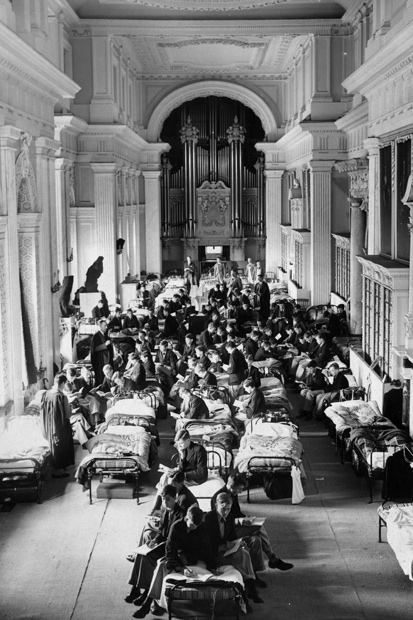Servicemen used paintings as dartboards. Schoolchildren dismantled banisters and paneling for firewood. Architects from the Ministry of Works acted like pocket Stalins. Sarcophagi were dumped in gardens beside beheaded statues. And overhead, Luftwaffe Dorniers droned with menace. Such hazards ravaged requisitioned country houses during the last war. Yet nothing imperilled them more, in the 20th century, than super-taxes and the rattle of death duties.
When the country houses were handed back, the majority were defiled as well as decaying from leaking roofs and dry rot. Cash-poor owners, already penalised by towering taxation, could not afford to carry out major repairs to their caves of ice — to borrow from Coleridge and James Lees-Milne.
The 1945 Labour government injected extra venom by setting the top rate of tax at 98 per cent and ratcheting up death duties twice in four years. Simultaneously, the West German finance minister, Ludwig Erhard, advanced in the opposite direction, by slicing taxes. While he engineered an economic miracle from rubble, hundreds of British country houses were reduced to it.
The British tax system crushed entrepreneurial spirit. Scarcely one new wealth creator rose from the mire to buy a cave of ice. Even the spate of Edwardian dollar princesses, whose dowries had bailed out houses like Blenheim, sank to a dribble. Supply outstripped demand. By 1970 one third of Britain’s country houses had yielded to gelignite or the wrecking ball.
Casualties of demolition included the French Gothic Eaton Hall in Cheshire, designed by Alfred Waterhouse. This is one of 20 outstanding country houses featured in John Martin Robinson’s latest book, which comes on the heels of his much-praised Felling the Ancient Oaks, and again blends scholarship with elegance of style, as well as black-and-white photographs of historic consequence.
The 188 rooms of Eaton Hall, belonging to the Duke of Grosvenor, were requisitioned for a military hospital and later for the Royal Naval College. When the house was razed and replaced in the 1960s the Duke of Bedford remarked drily: ‘It seems that one of the virtues of the Grosvenor family is that they frequently demolish stately homes. I trust future generations will continue this tradition.’ His views gained approval.
Earlier, the Bedford family’s behaviour caused raised eyebrows after the old duke died in 1940. His heir, a pacifist and Nazi sympathiser, was forbidden to visit Woburn for six years because it had been requisitioned by a black propaganda department employing brainy mavericks like Richard Crossman. They broadcast nightly to Germany. Later this duke shot himself while searching for cormorants — but not before tearing down half of Woburn in a blitz of vandalism.
Woburn’s misfortune was matched by the 18th-century Whig palace, Wentworth Woodhouse in Yorkshire’s West Riding. Its state rooms were battered by troops from wartime Northern Command. Afterwards the class warrior and minister for fuel and power Manny Shinwell destroyed Humphry Repton’s park by ordering minions to dig open-cast mines up to the walls of the house. Evidence of the damage disfigures the estate to this day.
Badminton, in Gloucestershire, was luckier. The Beaufort house was requisitioned to accommodate Queen Mary, George V’s widow, once mistaken by a myopic E.M. Forster for a layered wedding cake. The kleptomaniac struggled through six wartime years with 50 personal staff. She treated the duke and duchess (her niece) as guests, and allocated them just three rooms: a case of an insufferable guest masquerading as an intolerable host. The damage inflicted on Chatsworth, in Derbyshire, was no greater than at Badminton, despite its occupation by 250 girls from Penrhos school of the state rooms. This year the state drawing room has again become a dormitory, for an exhibition recreating wartime conditions.
The endurance of requisitioned houses like Chatsworth attests to the vigour of their owners. Most are no longer gated, fenced and locked. They flourish as open sanctuaries of culture. Millions of visitors are welcomed every year to admire their collections and the pureness of their architecture. The targets for wartime requisitions, super-taxes and death duties carry no survivors’ guilt. Why should they? John Martin Robinson answers that question.






Comments